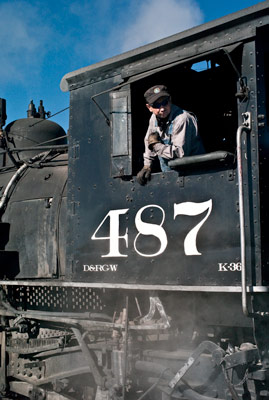Before World War II, steam was the only available way for railroads to move freight and passengers. Diesel locomotives replaced steam in the 1950s because it was easier to run them – no water, no coal, and less maintenance.
And you’d expect railroads to agree on a standard spacing between the rails. If rail gauge was different from place to place, a railroad would only work for local routes. But there were certain advantages to narrow gauges – cheaper construction costs, reduced space for curves, smaller rolling stock and locomotives. The last two were necessary in the Rocky Mountains where the terrain left less space for a railroad.
While nearly all U.S. railroads have converted to standard gauge to make cross-country operation easier, a few narrow gauge lines remain. One of these is the Cumbres & Toltec Scenic Railway out of Chama, New Mexico.
We discovered the Railway’s Chama depot by chance. The day we were to drive from Santa Fe to the Four Corners, I woke up with mild food poisoning. The usual route northwest around the Jemez Mountains is starkly beautiful, but there’s nowhere to stop for most of it. I really didn’t feel like driving for four hours without a break, so we drove north to Chama instead.
The depot has a working four-story coal tipple, used to fill up locomotive tenders with coal. Cars are made from a combination of wood and steel. Since most parts aren’t manufactured anymore, volunteer workers make everything they need from scratch.
Volunteers come from all over the U.S. to maintain and rebuild the railway, locomotives and rolling stock. They encouraged us to walk around the railyard and look at everything. There aren’t many narrow-gauge steam railroads left, so working on one is a treat!


Recent Comments